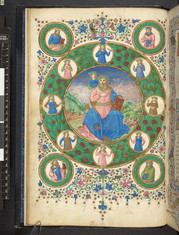Reading manuscripts is one of the most rewarding ways to engage with an ancient text or author because not only do you get the experience the text in its original language but you also get to see the thoughts of people (usually monks) from another time. Manuscripts also possess a beauty that is often missing in modern books as these texts have been intricately decorated by scribes and illustrators.
Manuscripts enable us to get an even greater insight into the ancient world and its reception, making them an invaluable resource to us today. However, that doesn't change the fact they can often be incredibly tricky to navigate: big blocks of text, scribbles in margins (marginalia) and continued script (scriptio continua). So, we at Academus have put together a guide on how to start decoding your own manuscripts.
They will take you through the manuscript tradition and some particularly famous Classical Manuscripts. Whilst they do not provide word-for-word translations (you can look these up online) they do help you to understand what information we can gain from manuscripts as a whole and how they are still such important tools for Classicists today.
From Egyptians to Monks to Kings of England- this is how the manuscript tradition developed and impacted the transmission of Classical Texts.
These booklets were compiled by Emily Shead, Lucy Moore, Lucy Bilson and Elysia Lovitt.
If you'd like to have a go at decoding your own manuscripts you can look at some originals through the British Library Digitised Collection for free!

Academus Education is an online learning platform providing free Classics Education to students through summer schools, articles and digital think tanks. If you wish to support us, please check out our range of merchandise, available now on Redbubble.
.png)
.png)






Comments